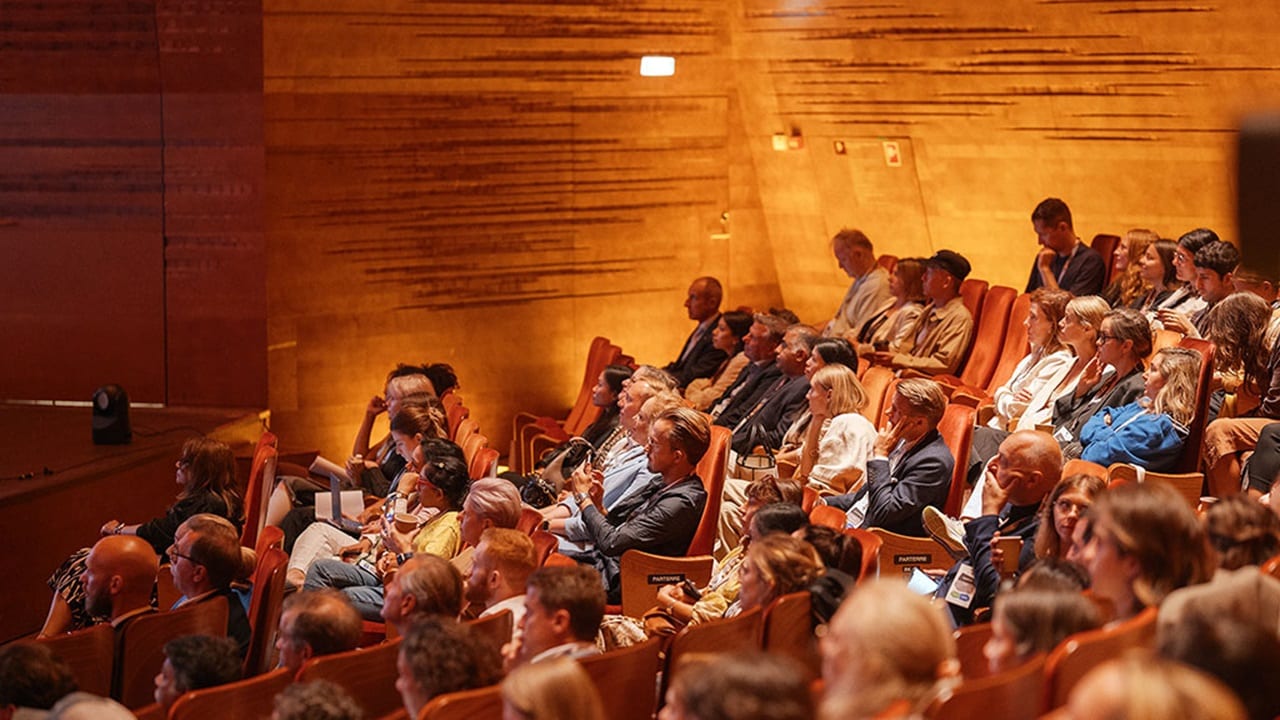The Global Fashion Summit: Copenhagen edition, attracted over 1.100 industry professionals, experts, and academics convened to discuss sustainability in the fashion industry.
The 2023 theme of the summit, hosted by the Global Fashion Agenda, was 'Ambition to Action', aimed at bringing ESG goals to life, into real, measurable action. With presentations from 137 industry leaders, alongside case studies, innovation labs, and roundtables; a new theme kept emerging time and time again: partnership.
Global Fashion Summit 2023 brings partnerships into play
Players across the industry brought to light the importance of partnerships in their efforts to decarbonise their supply chains. With ambitious decarbonisation and social sustainability goals in place, the consensus in the crowd and on stage was that to reach these goals within their timelines, it would be impossible to go at it alone.
In the panel discussion, 'Luxury's Sustainable Development' Jonathan Anderson, Creative Director and Founder of JW Anderson and Creative Director of Loewe and Antoine Arnault, Head of Image and Environment at LVMH discussed with Global Fashion Agenda CEO Federica Marchionni the necessity for cross-company collaboration. In particular they came to the mutual conclusion that luxury companies should be working together, in partnership, even with their competitors, to find lasting solutions for decarbonisation within the industry.
This sentiment was mirrored on day two, in a panel discussion between leaders in the fashion, watches, and jewellery spheres. Alexander Lacik, CEO of Pandora agreed with Iris Van der Veken, Executive Director and Secretary General of the Watch and Jewellery Initiative 2030, when discussing the trials and successes of Pandora's journey to source and implement recycled materials into their supply chain.

Additionally, Ian Ponce, Programme Officer with the United Nations Framework Convention on Climate Change echoed the necessity of partnerships when asked about the disparity between where the industry is now, and where it would like to be in 2030 in terms of decarbonisation goals. Ponce stressed the importance of not only cross-competitive collaboration between fashion corporations, but also involving the manufacturers and garment workers in this transition. He reminded the audience that the Scope 1 emissions of one company are the Scope 3 emissions of another. Noel Kinder, Chief Sustainability Officer for Nike echoed this sentiment, and highlighted that in order to reduce these Scope 3 emissions in a socially sustainable way, partnering with a supplier to utilise their existing wisdom and years of experience can allow for co-creation and mutual growth.
Partnering with logistics providers to reach decarbonisation goals
Fashion brands were not the only speakers and attendees in house at the Global Fashion Summit this year, but there were numerous service providers present. From data management software suppliers and textile recycling advocates, to cotton farming protectors and logistics providers, there were opportunities for brands to capitalise on the expertise of each specialised group. Logistics in particular was a large player in the summit, with a panel discussion of case studies and a keynote presentation focusing on the importance of partnering with a logistics provider that can help the industry reach their decarbonisation goals. So how can logistics help reduce Scope 3 emissions for the fashion industry?
Firstly, by partnering with a logistics provider that can provide digitalised tracking solutions for supply chain visibility, brands can rest easy knowing where their stock is, all the time. This increased visibility can enable less overproduction, and in turn, less waste, allowing companies to respond in real-time to potential delays by re-routing goods to different markets.
Secondly, working in partnership with a logistics company can give access to new greenhouse gas emissions tracking technology. Some companies already have digital solutions available that let brands see the volume of emissions coming from each transportation journey. In turn, empowered by this knowledge, brands can choose to reiterate their supply chains, increasing alternative transport modes and decreasing use of more GHG emission-heavy options.
Additionally, more and more logistics providers are utilising alternative fuels for lower GHG emissions. From electric trucking to container ships that run on methanol, there are increasingly more options available driven by the growing demand from logistics users.
Co-creating solutions through partnerships
While there might not yet be perfect logistics solutions for every industry need, by working closely in partnership with a logistics provider, brands can drive innovation by driving the demand for decarbonising logistics products and offerings. Thus, helping to move us closer to our net zero ambitions through the power of collaboration, co-creation, and partnerships.
未来,您想随时了解必读行业趋势吗?
您已经完成了,欢迎“登船”!
很抱歉,发送您的联系请求时出现问题。
请查看表单字段,确保所有已正确填写所有必填信息。如果问题仍然存在,请联系我们的支持团队以获得进一步的帮助。
未来,您想随时了解必读行业趋势吗?
使用此表格注册,即可直接在您的邮箱中接收我们的洞察见解,进入一个真正的综合物流世界。简单操作,即从我们为您量身定做的精选文章中获得启发,了解相关行业洞察信息。您可以随时取消订阅。













